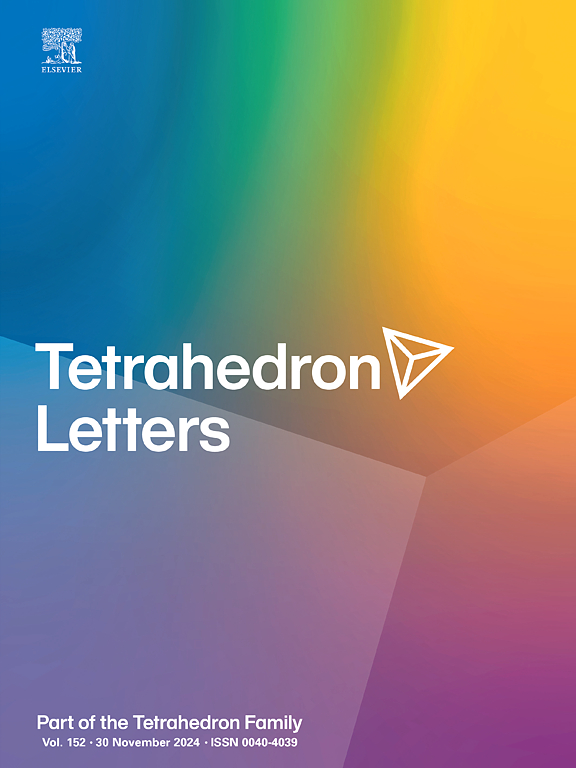Selective C–O bond cleavage at benzylic positions enabled by Zirconocene and Photoredox catalysis
IF 1.5
4区 化学
Q3 CHEMISTRY, ORGANIC
引用次数: 0
Abstract
We have developed a catalytic protocol for the selective cleavage of C–O bonds at benzylic positions using zirconocene and photoredox catalysis. This catalytic system enables the reductive cleavage of C–O bonds in both benzyl ethers and benzyl alcohols. Additionally, aromatic carbonyl compounds undergo deoxygenation to afford the corresponding hydrogenated products. Mechanistic studies support that ZrIII is the catalytically active species responsible for the C–O bond cleavage, driven by the formation of a strong Zr–O bond.

锆新世和光氧化还原催化使C-O键在苯基位置的选择性裂解成为可能
我们已经开发了一种催化方案,用于选择性切割C-O键在苯基位置使用锆新世和光氧化还原催化。该催化体系可使苄基醚和苄基醇的C-O键还原裂解。此外,芳香羰基化合物经过脱氧得到相应的氢化产物。机理研究支持ZrIII是催化活性物质,在形成强Zr-O键的驱动下,负责C-O键的裂解。
本文章由计算机程序翻译,如有差异,请以英文原文为准。
求助全文
约1分钟内获得全文
求助全文
来源期刊

Tetrahedron Letters
化学-有机化学
CiteScore
3.50
自引率
5.60%
发文量
521
审稿时长
28 days
期刊介绍:
Tetrahedron Letters provides maximum dissemination of outstanding developments in organic chemistry. The journal is published weekly and covers developments in techniques, structures, methods and conclusions in experimental and theoretical organic chemistry. Rapid publication of timely and significant research results enables researchers from all over the world to transmit quickly their new contributions to large, international audiences.
 求助内容:
求助内容: 应助结果提醒方式:
应助结果提醒方式:


